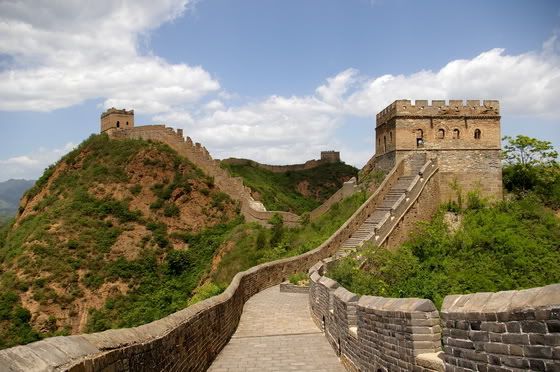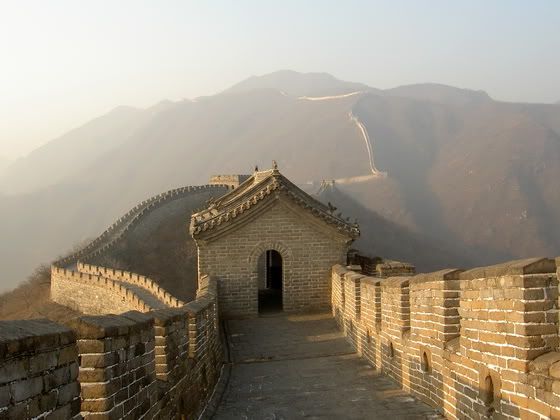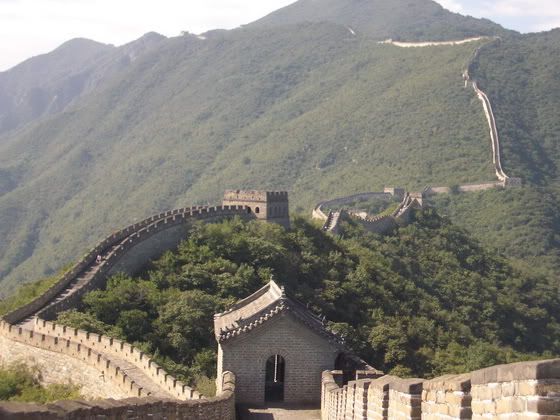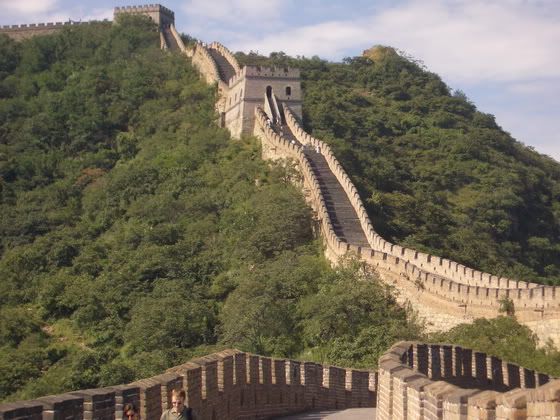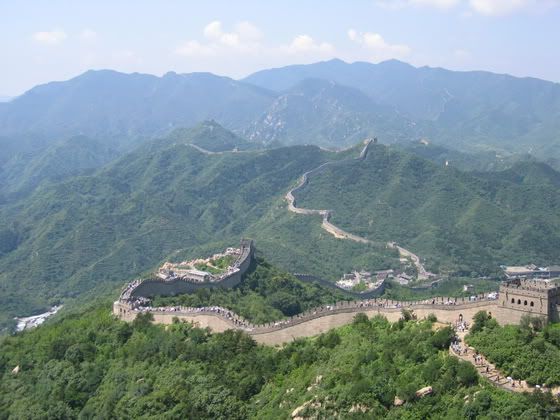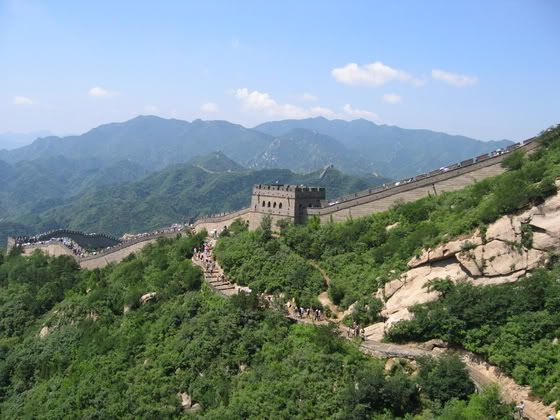
The Great Wall stretches from Shanhaiguan in the east to Lop Nur in the west, along an arc that roughly delineates the southern edge of Inner Mongolia. The most comprehensive archaeological survey, using advanced technologies, has recently concluded that the entire Great Wall, with all of its branches, stretches for 8,851.8 km (5,500.3 mi). This is made up of 6,259.6 km (3,889.5 mi) of sections of actual wall, 359.7 km (223.5 mi) of trenches and 2,232.5 km (1,387.2 mi) of natural defensive barriers such as hills and rivers.
Visibility from the moon

One of the earliest known references to this myth appears in a letter written in 1754 by the English antiquary William Stukeley. Stukeley wrote that, "This mighty wall of four score miles in length (Hadrian's Wall) is only exceeded by the Chinese Wall, which makes a considerable figure upon the terrestrial globe, and may be discerned at the moon."
The Great Wall is a maximum 9.1 m (30 ft) wide and is about the same color as the soil surrounding it. Based on the optics of resolving power (distance versus the width of the iris: a few millimetres for the human eye, metres for large telescopes) only an object of reasonable contrast to its surroundings 70 miles or more in diameter (1 arc-minute) would be visible to the unaided eye from the moon, whose average distance from Earth is 384,393 km (238,857 miles). The apparent width of the Great Wall from the moon is the same as that of a human hair viewed from 2 miles away. To see the wall from the moon would require spatial resolution 17,000 times better than normal (20/20) vision. Unsurprisingly, no lunar astronaut has ever claimed seeing the Great Wall from the moon.
Source





